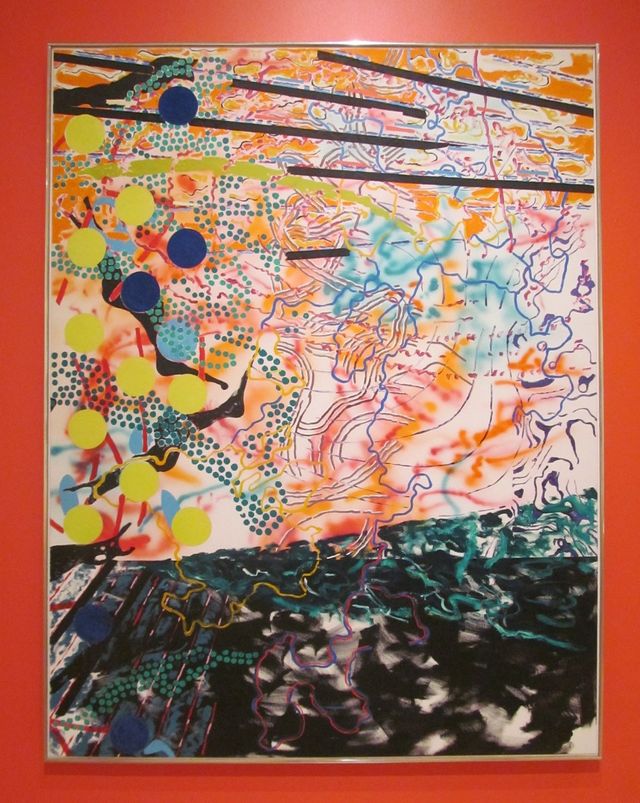Options for Welcoming Interests and Identities
As explained in the video Introduction to Multiple Means of Engagement in the previous section, all individuals differ markedly in the ways in which they connect emotionally, derive purpose, experience autonomy, and are willing to persist through challenges while learning. There is no one singular method or strategy that will respond to this diversity. Keeping learners engaged means they are provided with multiple ways to partake in learning, helping them to personally identify "why" they are learning something and what real connections this learning can have to their lived experience.
How Architecture Changes for the Deaf (Runtime: 4:48 min).
A strategy to welcome all learners equitably is to provide sources of information that are meaningful and relevant to different racial, cultural, ethnic, and gender groups. This proactive approach is culturally sustaining because it empowers students by using cultural referents to impart knowledge, skills, and attitudes (Fovet, 2021).
Options for Welcoming Interests and Identities
Below are four “considerations” or strategies for the options for welcoming interests and identities guideline. If you click on each of these considerations, you will find examples of how these strategies can be implemented into practice.
Optimize individual choice and autonomy
Providing choice for learners helps them design the learning conditions that work for them. Providing a variety of organizational tools can also help learners manage cognitive load and screen fatigue. Opportunities for agency and independence are vital to engage and interest learners. Consider providing opportunities for learners to choose:
- the type of rewards or recognition available;
- the tools used for information gathering or production;
- content, colour, design, graphics, layouts;
- the sequences or timing to complete subcomponents of tasks; and
- the design of classroom activities and academic tasks.
Optimize relevance, value, and authenticity
Vary activities and sources of information so that they can be:
- personalized and contextualized to learners’ lives;
- culturally relevant and sustaining;
- socially relevant; and
- inclusive of different racial, cultural, ethnic, and gender groups.
Design activities so that learning outcomes are:
- authentic;
- communicate to real audiences;
- reflect a purpose that is clear to the participants;
- allow for active participation, exploration, and experimentation;
- invite personal responses, evaluation, and self-reflection to content and activities; and
- include activities that foster the use of imagination to solve novel and relevant problems.
Address biases, threats, and distractions
Vary the level of novelty or risk by:
- Providing charts, calendars, schedules, visible timers, and cues to increase the predictability of daily activities and give advance notice of novel events.
- Creating class routines.
- Creating a welcoming, non-judgemental, and supportive classroom climate.
Vary the level of sensory stimulation by:
- Moderating the presence of background noise or visual stimulation by adding noise buffers or limiting the number of features or items presented at a time.
- Varying the pace of work, length of work sessions, availability of breaks, or timing or sequence of activities.
- Varying the social demands required for learning or performance, and the requirements for public display and evaluation.
- Involving all participants in whole class discussions.
Create an accepting and supportive learning culture by:
- Exploring how educator and learner biases can impact the learning environment.
- Creating space and ways for learners to share the biases, threats, and distractions they may be experiencing.
- Nurturing a culture where mistakes are a part of the learning process.
Nurture joy and play
Learning environments that foster joy and play are essential to the learning process, supporting curiosity, imagination, and relationship-building for learners of all ages. Playful experiences enhance engagement and spark new understandings, offering a pathway to joy from early childhood through adulthood. For historically marginalized learners, joy can also serve as a powerful act of resistance against systemic oppression, exemplified by the concept of Black Joy, which emphasizes freedom, imagination, community, and love. Recognizing learner variability, a UDL approach advocates for flexible and inclusive environments that help each learner discover their unique sources of joy.
- Encourage diverse forms of play, including outdoor, sensory, imaginative, and artistic play.
- Provide opportunities for exploration, experimentation, and discovery.
- Create spaces that connect joy to learners’ identities, sense of self, and communities.
- Celebrate learners’ accomplishments to build pride and confidence.
- Use storytelling to inspire and engage.
Are learners being given the right amount of choice in course, assessment, and activity design? Do learners feel valued in the learning environment? Are the activities and information valuable to learners?
The UDL Framework incorporates considerations for each guideline so that educators can anticipate the barriers learners may experience and proactively remove or mitigate these barriers. To see some examples of how to design learning spaces with barriers in mind, explore the Barriers to Learning Activity Cards below.
On one side of the card is a common barrier to learning. Before you turn it over, predict what a possible solution could be to help overcome that barrier. Turn the card to view a possible solution and the UDL consideration (where applicable). Remember that one barrier will likely have multiple solutions.
Flip card activityBarriers to Learning
Complete this activity on the Universal Design for Learning website
Open activityInstructions
If using a mouse, trackpad, or touch device, press the card, or the Flip the card button to flip the card and show the possible solution. From here you can navigate to the next card. To return to a card, use the previous button.
If using a keyboard or screen reader, press the tab key move between the next, previous links, and any links within a card. You can use the Left arrow and Right arrow keys to flip cards and navigate between cards.

Barrier: Distractibility

When people see themselves in their learning, they feel welcomed.
"Seven Ways You Can Foster a More Inclusive LGBTQIA+ Learning Environment" (Word Count: 868).
Using an intersectional lens to scan our educational environment can help identify opportunities to welcome and reflect the range of learners’ lived experiences in positive ways. It also helps us to note instances of stereotypes and negative inferences that can interfere with learner interest and ability to be present. Past experiences of marginalization generally result in a hyper alertness to further harm so that “motivation is more about the assessment of difficulty than the size of the reward” (Shanker, 2022).
Hear college student Nico Abad talk about the power of honouring social identities.
Nico Abad
[ Music ]
>> Nico Abad: Having the privilege of choice in any aspect of my learning experience is simultaneously very humbling and very empowering. As one of many students that has multiple identities, multiple intersectionalities, and has lived experienced with oppression, marginalization, or discrimination, I understand that having the privilege of incorporating my choices, being able to act on them, being able to share my experiences is not something that's afforded to people like me. And it's important to recognize that and to do something with that privilege which lends itself to the reason why it's empowering is that I get to take this opportunity to teach other people about my perspectives, about my life experience and have them learn from me. And, in turn, that encourages them to share their life experiences and perspectives with me, and I get to learn from them. This means that we have this collective reflection upon our life experiences about our perspectives. We get to grow together, and we get to build a learning community that is sustainable well beyond our time here at any educational institution.
[ Music ]
Student Voices: The Power of Honouring Social Identity - Runtime 2:07 min
https://www.youtube.com/watch?v=4-wicix8pj0